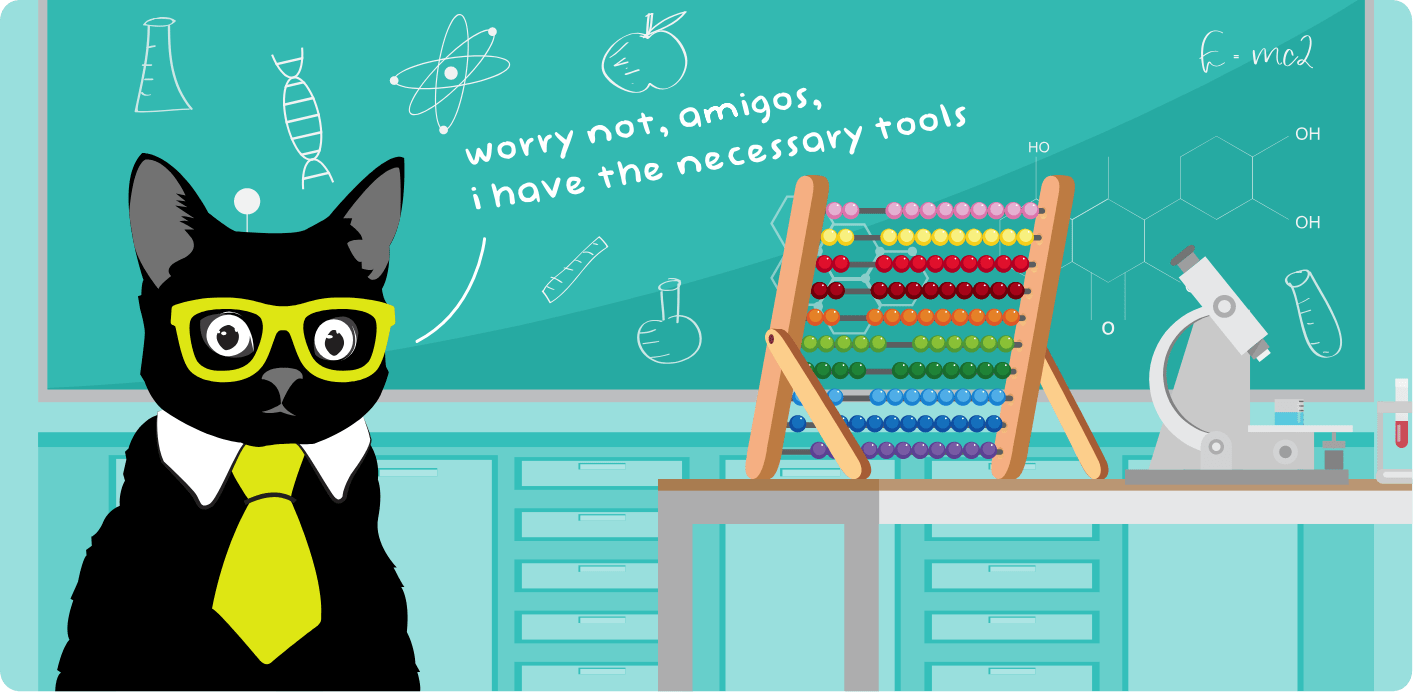We read the most recent reports & studies to compile the most vital customer service statistics for 2024, so you don’t have to!
It’s time-consuming to find information that’s both significant and up-to-date. We sifted through the most important reports & studies of 2023 and 2024 to bring you the support facts.
The following customer service statistics are all pulled from reputable industry leaders. Listed here are support statistics from trend reports, exhaustive studies, and even our own benchmark report. Read input from folks at Zendesk, Intercom, Ultimate, Salesforce, and more.
Customer service was shaken up like a snow globe over the global pandemic. Since then it seems the snow hasn’t quite settled, with the ricochets of AI advancements and macro economic repercussions.

This all affects how we move, work, and spend. Many customer service reports published in 2024 talk of evolving customer expectations and the challenges of keeping pace. Poor customer service will affect a company’s bottom line.
We hear a lot about data-driven decision making. Sometimes it can feel like the data at your fingertips is a little overwhelming, though. Worry not.
Customer expectations in 2024
To understand what shapes excellent customer service, we must first zoom in on what the customer is bringing to the table (or more what they’re expecting from the table). Salesforce found that 52% of consumers say poor quality service is the primary reason they won’t make a repeat purchase.
The following customer service statistics show that technological and digital trends continue to shape how customers want to interact with brands.
Zendesk’s CX Trends 2023 delves into how people’s attitudes toward service and brand experiences are evolving.
- Firstly, a timely response is still a requirement: 72% of customers want immediate service.
- But just as important is fluid communication, with 71% of customers demanding natural, conversational experiences.

Using customer data for personalization
Customers are aware that brands have access to information like their history, past issues, preferences, etc. And they want brands to use this data:
- 59% of consumers want businesses to use the data collected about them to create personalized experiences.
- 70% of consumers expect anyone they interact with to have the full context.
Salesforce reports that over 60% of consumers expect companies to react instantly with the most up-to-date information when transferring across departments.
As Intercom research corroborated:
- 82% of leaders say expectations for personalized support grew in 2022.
- 89% of support leaders say that personalized support is a key differentiator.
- Personalized support leads to being 2x more likely to report an increase in retention, brand loyalty & customer satisfaction.
One thing is clear: poor customer service will cause companies to lose revenue.
Yet most companies’ customer service teams are often not equipped to fulfil this need, when 60% of consumers report interacting with agents who have little or no context.
How expectations vary across industries*
- Retail has the highest-risk of churn: 81% of consumers are more inclined to put their money towards companies that offer personalized experiences in 2024.
- 78% of consumers will reassess their spending with travel brands in 2024.
- 70% of consumers will reassess their spending with media & entertainment brands in 2024.
*Salesforce Personalization, Data Security, and Speed Drive Customer Loyalty Amid Uncertainty Research

Customer service statistics for omnichannel support
Omnichannel support refers to a customer service approach that allows customers to interact with a company across various channels seamlessly. This includes phone calls, email, chat, social media, and other online channels.
Excellent customer service cannot just exist on one platform. With omnichannel support, customer service interactions may start on one channel and fluidly move to another without having to start from scratch.
Phone and email are still the most popular modes of support, but video and social media are climbing in the ranks.
Businesses can improve customer satisfaction through personalization and ease of support use.
Zendesk found that 42% of businesses offer two or more support channels.
Most popular support channels
- 28.1% of companies primarily use Email
- 22.9% of companies primarily use Phone
- 14.4% of companies primarily use Social Media
- 13.2% of companies primarily use Chat
- 11.3% of companies primarily use Video
- 10.2% of companies primarily use SMS

Customer service 2024 KPIs & Benchmarks
Keeping up with these expectations is not easy. Customer service teams need to monitor and assess the appropriate customer service metrics to ensure that they are satisfying these expectations.
Scroll a little longer for a metrics explainer video featuring cats.
Klaus, partnering with Intercom, Aircall & Support Driven, surveyed 4,050 customer service professionals. We compiled the results into our Customer Service Quality Benchmark Report.

Most popular metrics and their current benchmarks
CSAT (Customer satisfaction score) is tracked by 38% of teams.
- The CSAT benchmark for 2023 is 85%.
- 23% of customer service teams consider CSAT to be their most important KPI.
- CSAT is higher for chat and phone (86%) than email (82%). The response rate is also highest for chat (19%).
- Only 19% of CSAT ratings have a comment.
DSAT (Customer dissatisfaction score) is tracked by 43% of teams.
- 16% of teams consider DSAT to be their most important KPI.
IQS (Internal quality score) is tracked by 36% of customer service teams.
- The IQS benchmark for 2023 is 88%.
- 14% of teams consider IQS to be their most important KPI.

NPS (Net promoter score) is tracked by 28% of teams.
- The NPS benchmark for 2023 is +47.
- The average NPS response rate is 13%.
- 11% of customer service teams consider NPS to be their most important KPI.

FCR (First Contact Resolution rate) is tracked by 30% of teams.
- The FCR benchmark for 2023 is 70%.
- 11% of customer service teams consider FCR to be their most important KPI.
AHT (Average Handle Time) is tracked by 25% of teams.
The AHT benchmark for 2023 is
- 10 minutes for chat
- 12 minutes 39 seconds for email
- 6 minutes 33 seconds for phone
Customer service statistics on the support tech stack
Your tech stack serves as both your team’s workplace and weaponry. It’s the place where your agents, managers, QA specialists, etc all spend their working hours, and it’s also the collection of tools they rely on to provide excellent customer service.
But there’s a balance. Too many tools, and you’ll overburden your team, too few and they are ill-equipped – both lead to poor customer service.
It also leads to a negative employee experience. Zendesk found that 52% of customer service employees believe that software related to their employee experience is dated and difficult to use.
Current frustrations with support technologies*
- 31% of support leaders report ‘limited reporting capabilities’ with their current tech stack.
- Half of them also face issues with tool integrations not working seamlessly.
- 76& of support leaders believe their current tech stack holds them back from achieving goals.
- 54% of support teams still lack the tools they need to personalize their support at scale.
This year, many support leaders will look to update the technologies they use
- 73% of support leaders say they’ll need to make their tech stacks work harder in 2023.
- 73% will prioritize tech stack interoperability.
- 45% want to prioritize better value for money.
- 52% of support leaders are investing in tech that helps agents with workload.
*Intercom’s Customer Service Trends Report

Statistics for customer service quality
Quantitative data, like metrics, only tell part of the story. To truly understand how to turn every interaction into a positive customer service experience, teams also need qualitative data.
Essential for every support team in 2024 is an airtight quality assurance program. Customer Service Quality Benchmark Survey dug into how customer service quality is approached:
90% of teams conduct conversation reviews (support QA). 86% of organizations agree that conversation reviews improve the quality of customer service. And 82% of teams have hired a support quality specialist to help manage the process.

Customer service statistics that show the benefits of a QA program:
- 76% of organizations agree that conversation reviews help improve CSAT.
- 74% of support teams agree that conversation reviews help onboard new agents.
- 77% of teams agree that conversation reviews are useful for team members’ professional growth.
- 48% of teams use reviews to track IQS.
- 44% of teams use QA results in 1:1 feedback meetings.
- 42% of teams use QA to measure the performance of BPOs.
How can you choose which conversations to review?
- 37% of teams review conversations containing certain keywords or topics.
- 35% of teams review conversations with poor performance.
- 32% of teams use AI to help them select the most useful conversations to review.

Inspiration for categories to put on your scorecard
The average number of categories is 14 (although the median is a far more reasonable 8!).
Many teams use a binary rating scale (47%) to rate categories on a QA scorecard, although rating scales can be far more granular.
The biggest challenges for support teams
It is one thing to understand customer expectations and measure quality. But some teams find that external problems prove to be the heaviest burden.
Leading a CX team right now is no easy feat, as Ultimate’s 2024 Trends Report shows:
- 64% of leaders report that their support departments need to improve their overall customer experience.
- 71% say their customer service departments need to eliminate manual, repetitive tasks.
- Hiring and training is an ongoing headache, with 43% of customer service teams reporting that this is their biggest challenge.
- 20% struggle to measure the value and success of their support team. (Pssst – this is where quality management can help.)
Our survey broke down the most significant pain points by team size. Small teams (<50 agents) struggle most with increasing customer service agent productivity. Larger teams (>50 agents) struggle most with maintaining quality support while scaling.
Avoiding poor customer service starts with tackling these challenges
Customer service statistics for AI & automation
Most support teams are combating these challenges by investing more in artificial intelligence and automation. Automation aims to improve team efficiency, while AI aims to enhance how a team works.
Our survey found that:
- 70% of organizations plan to invest in automation.
- Mid-size support teams (51-500 agents) are the most focused on improving their AI capabilities.
- However, over a quarter of support teams still struggle to reduce support volume when using bots or automation.

Companies who don’t invest in AI will fall behind
According to Ultimate:
- The average company who invests in AI sees a 250% return on investment,
- 56% of brands are more likely to invest in AI-powered automation in 2024.
- 67% of customers predict generative AI will soon have a central role in support.
- Only 2% of those surveyed say that their confidence has gone down in AI in 2023.
According to Zendesk:
- Two thirds of consumers said they view companies that use AI to be ahead of the competition.
- 78% of consumers want AI to summarize their questions or issues so the person helping them can quickly resolve the matter.
How companies are approaching AI and chatbots in 2024
34% of all customer support teams currently offer self-service via chatbot. Ultimate found that SaaS, Financial services, and ecommerce are the industries most likely to adopt generative AI bots.
Automation is an excellent strategy for cutting costs. For example, David’s Bridal found that – since rolling out a bot – their contact center operating costs reduced by more than 30%.
Zendesk reports that:
- 68% of EX professionals believe that AI & bots will drive large cost savings over the next few years.
- 77% of consumers agree that AI or bots are helpful for simple issues.
- 71% think they get faster replies with AI/bots.

Proactive customer service stats
Proactive support is an approach in which businesses identify and address customer issues before they become problems. If help is hard to find, it makes for a poor customer service experience.
Our survey found that 77% of smaller teams (<50 agents) plan to invest more in proactive support this year.
Apart from automated bots, how do companies support customers proactively?
- FAQs
Intercom found that proactively answering customer questions with FAQs is a top priority for 42% of support teams. - Help Centers or Knowledge Bases
Ultimate’s 2024 trend report shows that knowledge base creation is currently the #1 most desired skill in support employees. 91% of consumers would use a knowledge base if it met their needs.
2024 Customer service trends
Intercom’s Customer Service Trends Report of 2024 detected 5 prominent support trends that demand attention right now:
1. Customer expectations are higher than ever. 87% of support teams in 2024 say customer service expectations have increased in the past year (higher than 2023 and 2022). They require a blend of AI and human support to be met.
2. Almost half of customer support teams have already adopted AI. 24/7 availability, time savings, and fast resolutions of customer issues are the three most important benefits of AI.
3. AI is coming to change support roles, but likely not in the way many assume it will. 42% of teams will seek to hire a chatbot analyst in the next five years.
4. Dated tech stacks hold support teams back. Many teams are reevaluating their tools this year. 76% of C-level support execs said they’re always looking for new platforms, tools, and technologies.
5. Teams will look to update their KPIs this year. 75% of support teams say that customer service metrics are changing as a result of recent AI developments.

Support teams’ priorities in 2024
To grow the significance of customer service as a revenue driver, teams must seek ways to strategically meet their goals. Budgets being, for most, tighter than in previous years, prioritizing is crucial.
Gartner’s Top Priorities for Customer Service & Support Leaders shines a light on this.
By improving operations, companies can reduce costs, increase productivity, and enhance customer satisfaction. The following customer service stats break down the priorities of different teams:
- One-third say customer data & analytics
- One-third say knowledge management & insight
- 35% say digital channel effectiveness
- 37% a third say self-service adoption & containment
- Over 40% say multichannel, omnichannel & dynamic channel
Optimizing costs remains a high priority for nearly half of the respondents. Businesses must look for ways to grow while keeping their expenses under control.

What these customer service statistics tell us about 2024
The truth is, although customers’ purse strings are tight and expectations of support even higher than before, service teams have the potential to succeed.
This comes down to:
- Measuring and understanding a company’s customer service – and using tools and training to improve with precision. This means analyzing customer feedback & QA reviews to give actionable feedback to agents.
- Leveraging technology in the form of an updated tech stack. AI and automation will continue flourishing to help customer service agents focus on complex queries and reduce repetitive ones.
- Companies understanding the potential of great customer service as a revenue driver. Giving voice to customers by sharing their support data among teams, using it to shape future plans for true customer-centricity.
Did you know quality assurance helps you take a proactive approach to customer happiness?
Read more: How QA improves Customer Satisfaction





